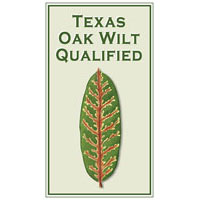Most trees go into dormancy through the winter, but they’re still vulnerable to insects and pests. Texas winters are often mild. Insects try to survive through the winter by hiding within the cracks/crevices of the tree’s bark. Here are some of the pests that can damage your trees.
Spider Mites
Spider mites favor the hot, dry weather of summer, but in the winter, the mites hide in crevices in the tree trunks to stay warm. Red spider mites are extremely small, allowing them to go unnoticed. You might notice a webbing on your trees or a red dusting. During the warmer months, spider mites multiply quickly, making them difficult to exterminate. The cooler weather in winter is a perfect time to get rid of them.
Two-spotted spider mites are even harder to detect because of their small size, only about 1/50 inch long. These mites feed on sap and cause leaf damage when left uncontrolled. Two-spotted spider mites also prefer the hot, summer months. In the winter, the females hibernate under tree bark. These spider mites may also leave a small webbing structure like that of spiders. You may need an ISA Certified Arborist to help identify the insect that is causing the problem.
Scales
Scale insects are mostly immobile pests that often look like small bumps on a plant rather than insects. Scales cause a plant to become weak and not grow well. There are over 8,000 species of scale insects divided into two types – soft and armored. Armored scales secrete a protective covering over themselves, like an armor. The pest lives under this coating and feeds on the host plant. Soft scales can move short distances and secrete a waxy film, which protects them from insecticides. Adult females lay eggs under protection. When the crawlers hatch, they move to a suitable feeding site and start the cycle themselves. An infestation can often go unnoticed until the tree shows significant damage.
Aphids
Aphids are often called plant lice. Ornamental plants are very susceptible to aphids, but so are many trees. The insects are tiny, less than 1/8th of an inch. They come in many different colors, yellow, orange, green, and red. Ladybugs love aphids, but you can’t rely on having a large enough population to manage an infestation. Aphids suck on plant sap, which causes a tree to stop growing. The eggs that are laid in fall remain dormant through the winter, giving the aphids a head start when the spring temperatures increase.
How To Treat Pests in the Winter
The colder months are a great time to get your trees ready for spring. An ISA Certified Arborist can look for signs of an infestation or damage. Here are a few suggestions for keeping your trees healthy:
- Weed and prune back trees in the winter. Look for signs of nesting insects while you’re taking care of your garden.
- Use a dormant oil, or winter wash, on your trees. This is an oil-based spray that doesn’t harm the trees, nor is it harmful to children or pets. A dormant oil suffocates insects and eggs, preventing scales, mites, and aphids from wintering. Dormant oil needs to cover the entire surface of trees and branches. You need to spray the dormant oil when temperatures are above 40F. Look for a horticultural dormant oil to protect the trees.
- Install glue bands or a fruit tree grease around the base of your trees. Just like the name suggests, you use a glue band or a type of grease on the tree trunk to prevent insects from climbing up the trunk.
- Talk to a tree specialist. Trees are valuable to your property and the environment. If you aren’t sure about the best way to prevent insects and pests from damaging your trees, call a company that offers tree services.
Your Tree Experts
Hildebrandt Tree Tech is thankful for our customers. We are looking forward to working with you next year to take care of your trees. If you’re a current customer, please give us a review. Schedule a service appointment now to get your trees ready for spring.






